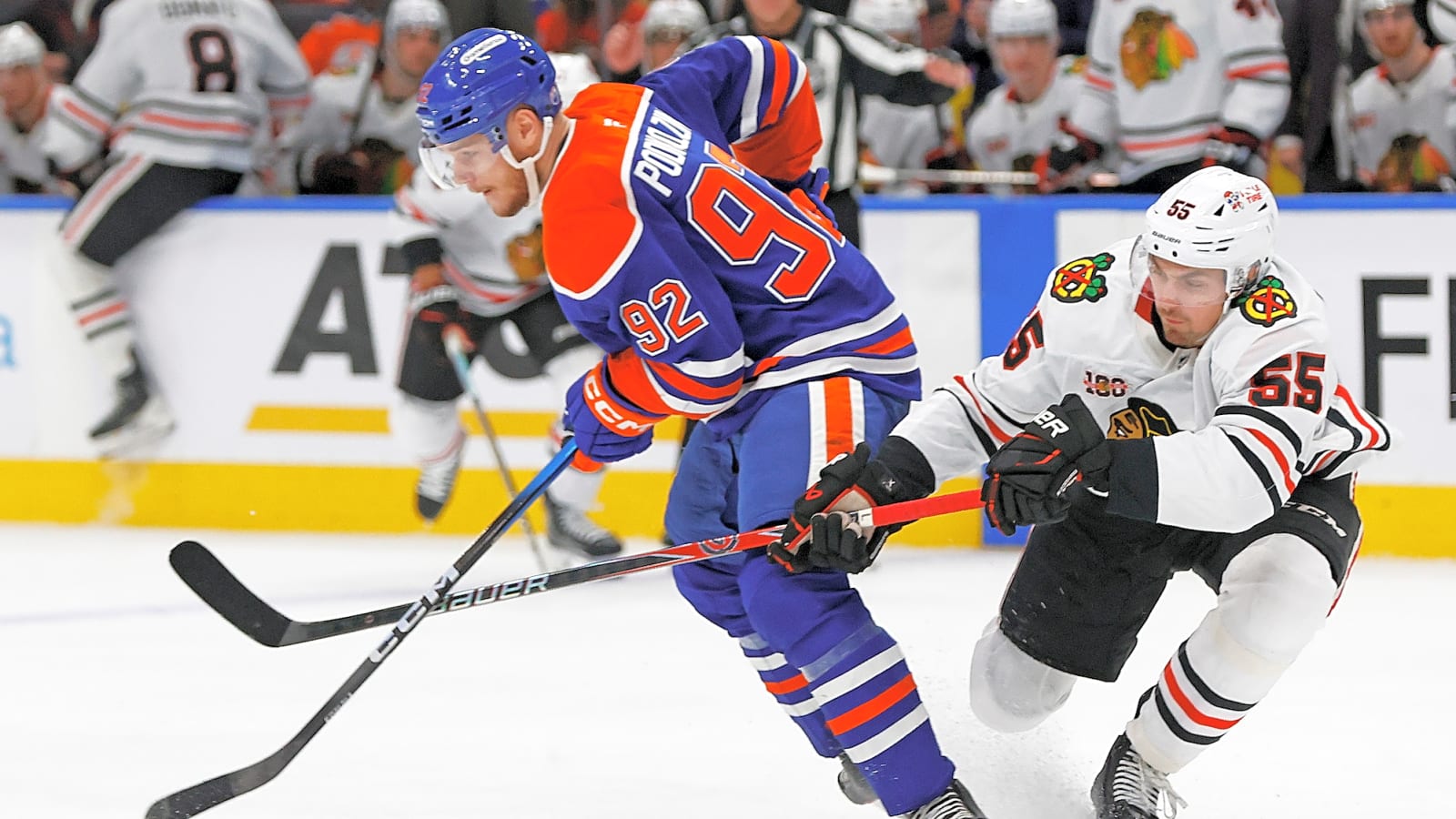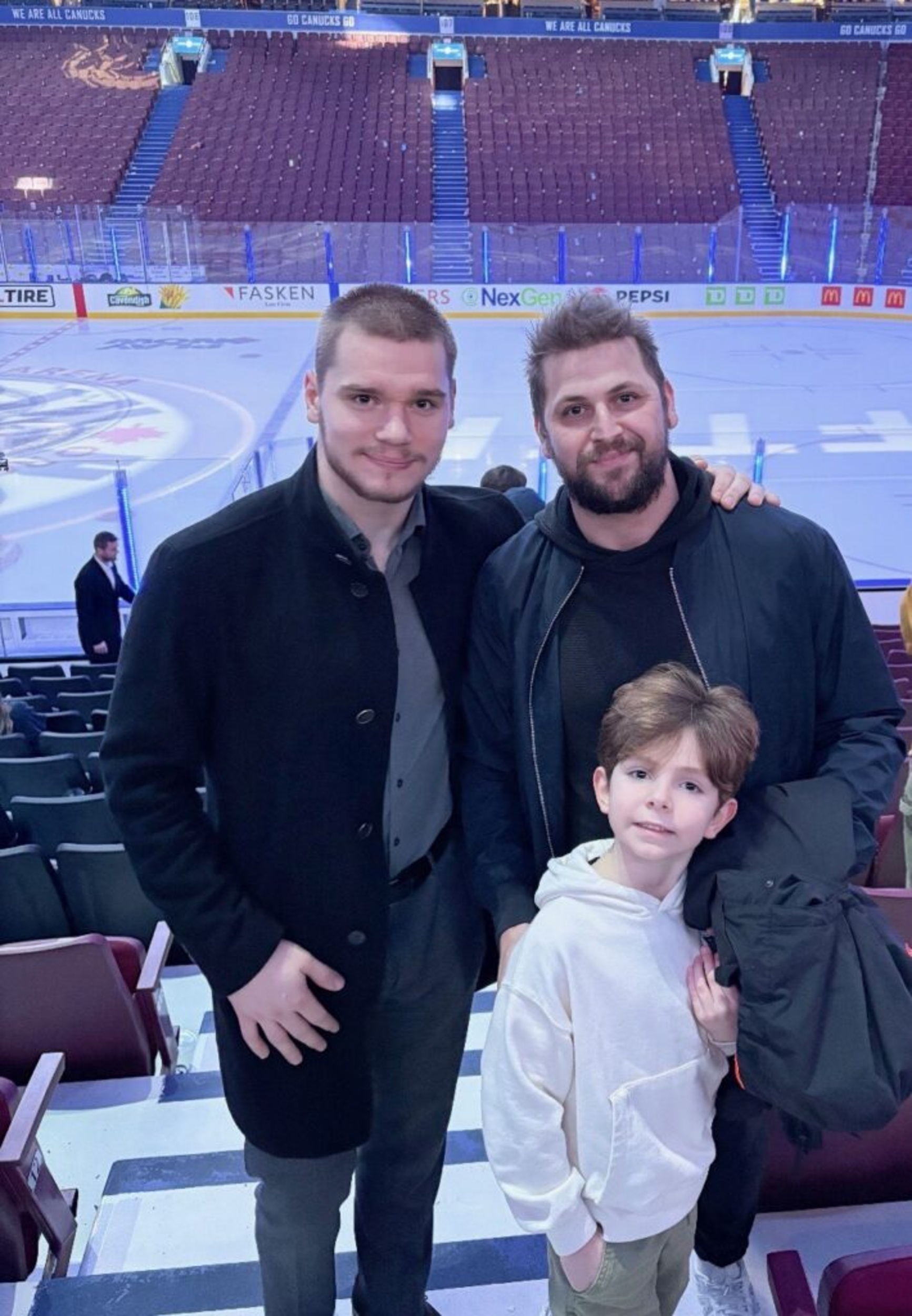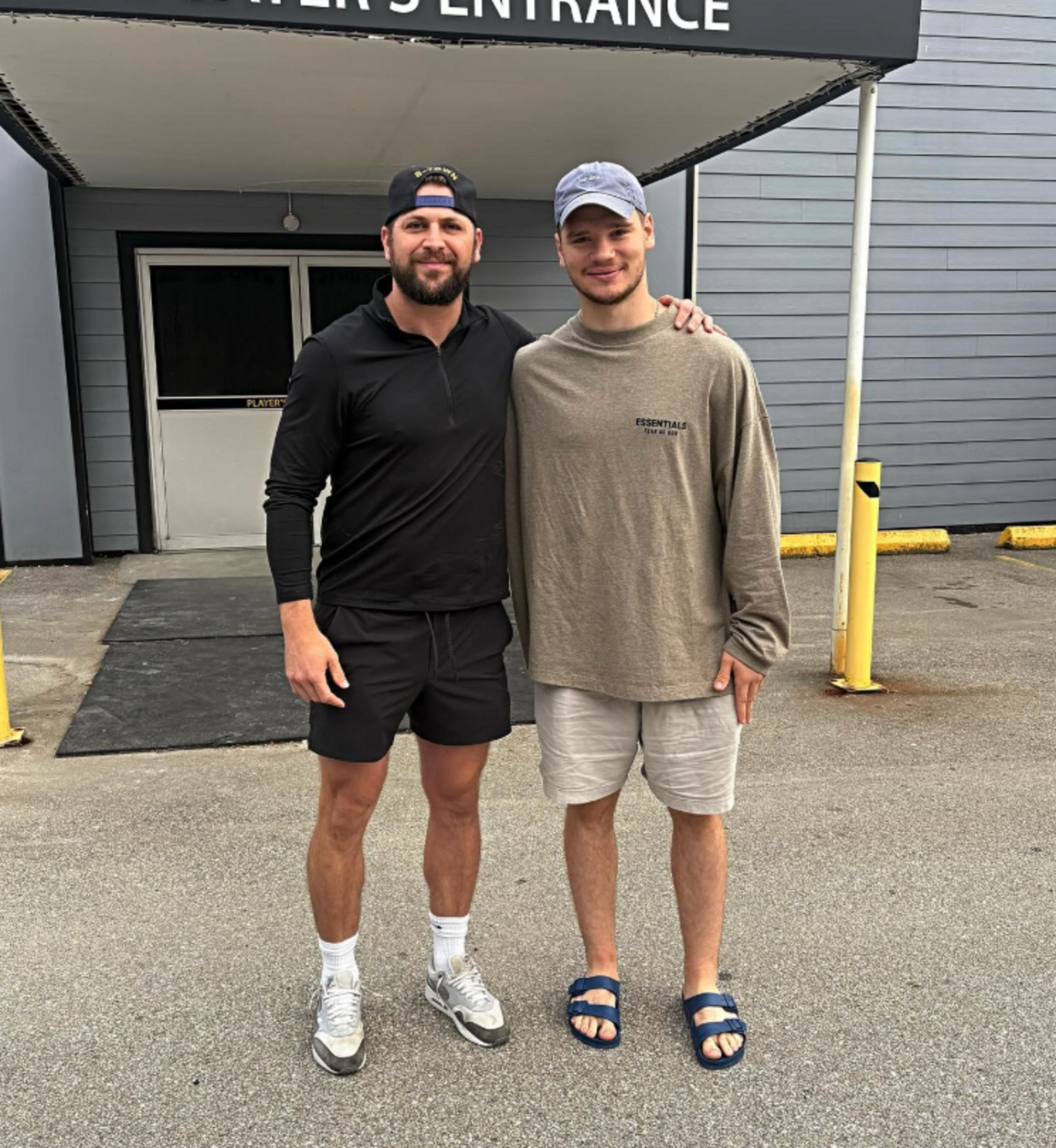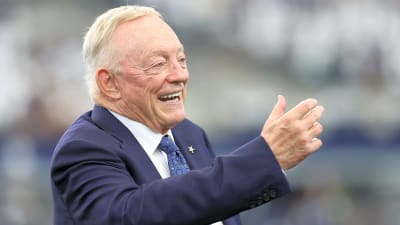
Before the 2025-26 campaign began, I wrote about what a successful season could look like for Vasily Podkolzin. I mentioned that success for him would include being a leader in hits on the Edmonton Oilers — which he currently is with 46 hits — and also surpassing the 30-point plateau.
I wrote that surpassing that point total is possible because he should be heading into the season with more confidence, and because he worked with a skills coach this past offseason, former Los Angeles Kings draft pick Ned Lukacevic (@nedlukacevichockey).
In my view, Podkolzin’s game looks more refined. He appears more confident with the puck, assertive, and creative off the rush, and just over a month into the season, he’s on pace for over 30 points. With that in mind, we sat down with his skills coach, Ned Lukacevic, to chat about how he got into the role, how he connected with Podkolzin, the specific skills they worked on, and his relationship with the hardworking Oilers winger.
Q: You were born in Serbia, which isn’t exactly a hockey hotbed. Can you tell me how you got started in hockey and how that journey led to being drafted into the WHL and eventually by the L.A. Kings?
“Yeah, I was born in Serbia, and my parents were both from there. My mom actually — she’d lived in Canada during her teens, and then she went back home and met my dad. Then I was born there, and at the time, there was a civil war in ’86, so we immigrated to Canada. It was the typical hardworking story; my dad worked a couple of jobs, but he was mainly a janitor. My mom worked in retail, and they cleaned up places together.
I started playing hockey when I saw my uncle play one day. I was actually three, and I wanted to go on the ice. I just started playing from there, and like that cliché goes, the rest is history. I played minor hockey in Port Coquitlam, where I actually played with former Oiler Devan Dubnyk. I then got drafted in the WHL bantam draft by the Spokane Chiefs and played four seasons in the WHL.
I felt I was a pretty good hockey player. I was a forward, and my style of play was skillful, finesse, playmaking, and I liked to score. I ended up getting drafted by the Los Angeles Kings in 2004, and played pro hockey for 13 years in the American League and in Europe.”
Q: You mentioned that you were drafted by the Los Angeles Kings. Can you tell me what that experience was like?
“I was drafted by the Kings in the fourth round, and I think I kind of underachieved a little bit. That’s where I think I bring value to Vasily Podkolzin, because even though I underachieved, he sees the skill I had.
I just couldn’t put it all together. I was skilled and worked really hard, but I missed that window. In my first two training camps with L.A., I was always the last guy sent down. Then when I’d go to the minors, instead of being hungry — I’d play in the exhibition games and was always talked about as one of their top prospects — but when I’d go down, where I’d make the mistake was I’d be blaming everyone, like ‘screw those other guys,’ always blaming the coach, or say ‘why him?’

Instead of being the first call-up, I’d say, ‘he’s getting called up and not me?’ My energy wasn’t focused on doing good and being happy for the other guy; my energy was always in other places, and I couldn’t be what I wanted to be. I learned a lot about myself from all of that. I developed a more positive mindset and became more grateful, and through my experiences and sharing them, I think that’s how Podkolzin and I really built a friendship.”
Q: With all of your experience playing professional hockey in North America and across Europe, what are some things you’ve learned from that journey?
“That humility is really important. I always say this — this is what makes Podkolzin really good, too — just listen to coaches and other people. You don’t have to take everything they’re saying, but take some part of the message. You can put that into your tool belt. There were some players, when I was playing, that I thought I had more skill than when I was young in the minor leagues, but what made them better was their humility, their ability to adapt, learn, and just get a little 1% better every day. That’s the biggest thing that I try to teach kids, is not to be entitled.”
How did you get started in your career as a skills coach?
“I’m actually a head coach of the Academy team here in the CSSHL. I love coaching kids — it’s high-end hockey. When I got into coaching, I started with friends in the game; I’d watch their videos, and I’d go help out. I started coaching young kids, and then in Vancouver, I began doing skills lessons and putting purpose behind the development. It wasn’t just going through cones; it was watching players’ videos and finding ways to help them.
Eventually, I started working with a few younger WHL and pro guys and began posting some content and videos, things like ‘How to approach a coach if you want more ice time,’ or, as a coach, ‘How to deal with a toxic parent,’ and ‘How to talk to your coach.’ That’s kind of how I got my name in Vancouver, and then Podkolzin is one of my big players that I worked with early. After that, I worked with Logan Stankoven and then a bunch of good AHL guys. I also stay in touch with Tampa Bay Lightning’s assistant general manager, Jeff Tambellini, where I can connect with players they want to send.”
Q: How did you first get connected with Vasily Podkolzin?
“It’s a funny story. There’s a Russian player on my team — he’s a skillful player and was struggling, and I put a lot of time and effort into him. What had happened was, one day, Pods was going to go on the ice with him, just to skate around. They’re mutual family friends, and he told me, ‘I’m going on the ice with Podkolzin today.’ I said, ‘Hey, can I run the practice for you guys?’ and he eventually let me.
I ran the practice, and they loved it. I did some intense and creative drills. I had some slipsticks out there where they passed through some seams and made it creative. I wanted to make it fun for them — something they’d remember if they ever came back. As soon as I got home, Podkolzin messaged me on Instagram and said, ‘Hey Ned, can I do another session?’ Then he came by, by himself, a week later, and he liked it again. We ended up doing 15 or 20 sessions two summers ago. He was in the minors at the time, but even then, we were still talking, talking a lot, connecting, and I’d give him advice and guidance.

I think that’s really where he started trusting me in our relationship. He wasn’t a big NHL player at the time — I just wanted to help a guy, since I was previously in a similar situation in the minors. I’m a guy that, if I love you, I love you, and he’s like that too — he’d give the shirt off his back, and that’s what makes him, him. I think that’s where we connected. Then all of a sudden, he gets an opportunity with the Oilers, and boom, it just kind of took off.”
Q: This past offseason, how long were your workouts with Podkolzin, and how long did each session typically last?
“He was here for about a month. When he was playing with Vancouver, it was longer. He’d do one-on-one sessions with me and then do group training with other pro guys. He liked the specifics of the one-on-ones because he identified where he can improve. Like line rushes, when he has the puck, he wants to carry it into open space. I’m able to watch him and say, ‘You stop moving your feet here.’ He recognized that he wanted to improve his puck handling in tight spaces, and we wanted to work on improving his attack off the rush.”
Q: With that in mind, I feel that he’s been much better off the rush this year. He seems stronger on the attack and holding onto the puck longer. Your thoughts on that?
“I think it’s because we practiced little things off the rush. Also, I think if you make people feel confident, that’s half the battle as a skills coach. I never say to him, ‘Do this.’ I always ask, ‘What are you thinking here?’ And he’s smart. He says, ‘I play with Draisaitl a lot, so when should I have the puck in the zone? In what areas?’ So I say, ‘OK,’ and when we practice, I’ll say, ‘Well, I can be him.’ And we practice situations. And he’d explain situations and say, ‘I think he might be here if I do play with him, or here if I’m with this guy.’
A lot of his ice time was with Leon Draisaitl last year, so a lot of his preparation and playing is planned around that, too. And not just Draisaitl, but other players and areas.

If he’s in a bottom-six role, he knows exactly when and where to make plays. What we’re trying to work on with him is that when you’re in those opportunities, maybe you can skate into open ice and then make the play to him. I think before, when he was playing with Draisaitl, he thought, ‘I need to move it as fast as I can, whenever I can, wherever I can.’”
Q: Are there any other skills you and Podkolzin focused on this past summer?
“Yeah, his shot accuracy. He has a powerful shot, and he is pretty accurate, but sometimes he shoots the puck so hard that sometimes it’s more about looking through the puck’s lens. He sees an open net, but is that what the puck sees? Or, if you’re in this spot, what areas are high percentage scoring chances for him? We also practiced his release — if he can get it off in 0.34 seconds, it’s hard for the goalie to react.
VASILY PODKOLZIN MAKES IT 6-5 OILERS!
: @Sportsnet pic.twitter.com/ti1A4aMxJ0
— Oilersnation.com, Oily Since ‘07 (@OilersNation) October 24, 2025
He has a powerful shot; it’s just a matter of getting it off quickly. We’d practice drills — I’d pass a puck to his backhand, he’d shoot it quickly. I’d pass it to his forehand, no handle, he’d just rip it. I’d tell him, ‘Shoot in these areas, these are the percentages,’ and I think he really took a liking to that.”
Q: It seems the coaching staff has taken notice of Podkolzin’s improvement with the puck, giving him chances to play in overtime. Are you seeing differences in his game this season that reflect that improvement?
“I have. I think he’s doing a better job of moving his feet across the blue line. Before, you could almost see that he was immediately just going to drive the net. Now, he’s pulling up a little more. He’s looking for under-the-stick passes. He had a nice play a few games ago — he went below the hash marks, pulled up, hit the late guy, and there was a deflection. I think he’s understanding that he can hold the puck for a split-second longer.
I also understand his thought process. Playing with Draisaitl or Connor McDavid, they need the puck on their stick. They’re the big dogs, and he knows that. I just try to help him understand what situations he can maybe have other options too. Leon understands — if the play isn’t there, don’t force it to me. I try to help Pods see that there are other options.”
Q: How often do you chat with Podkolzin?
“Every few days, I just text, ‘How are you doing?’ ‘What are you up to?’ ‘How are you feeling?’ Especially with everything he went through with his father, I just want to see how he’s doing. I think that’s how we bonded. I think that’s how I build relationships with my players. I think they want good people in their life — not necessarily a friend, but someone they can talk to and trust.
Coaching is different nowadays; it’s a relationship. And all these guys, they’re emotional guys. They’re young guys, and that’s the way of the world. You want someone you know you can trust, someone who isn’t judging you and who you can talk to.
For Podkolzin, it’s not me saying, ‘Do this!’ It’s me saying, ‘Good job,’ and asking, ‘Have you thought about trying this?’ ‘What are your thoughts?’ Whether it’s him or Logan Stankoven, I’ll ask them, ‘What do you see here?’, ‘What do you think?’
Podkolzin took little pieces of learning from everywhere, like an ex-coach with the Canucks or somewhere. That’s what makes him really good, and also his humility, gratefulness, and not being entitled has really helped him.”
Q: What can you tell me about Podkolzin’s work ethic?
“It’s insane. His work ethic is off the charts. When we train at where I work — it’s a training center — he goes for one hour at Mach ten. When we’re training, I’ll try to start a conversation to buy him a minute or 30 seconds of rest, and he’s just so focused on the training. When we first started training, I’d have seven or eight drills, which is an hour’s worth, and he’d blow through those in 27 minutes, I’m talking 20 reps a pop. We’d do low work, give-and-go’s, cutbacks, drills that are 10 to 20 seconds at full speed, and when he’s done, there’s no rest. He’d take a breath and be like, ‘Let’s go!’

In Vancouver, people know about him because he’s a high draft pick. In practice, kids and parents will watch him, and the parents will say, ‘Holy sh*t.’ You know, there are McDavids and Draisaitls of the world, but to see a guy like this who is not a superstar, and then see how hard he works, they’re all stunned and saying, ‘This guy is a workhorse.'”
Q: With your work in skills training, what are some of your long-term goals?
“Every few months, I email NHL teams and stay connected to my old coaches, teammates, and mentors. In this game, it’s really hard to get your foot in the door, especially if you weren’t a full-time NHL player, and that’s just the truth. So you have to really stand out above all.
And how do you stand out as a skills coach? You have to have a good name, a good product, and a good image. You have to show that you can help players, on the ice and off the ice. For me, I didn’t play in the NHL full-time; I played in the AHL. I was a fairly high draft pick, was a good junior player, and played with skill. So I have to separate myself from a full-time NHL player — how do I do that? I have to connect with people, build relationships, and show that I know and study the game, and that I can actually help a team with what I’m bringing. My goal, I’m hoping in the next year or two, is to get an opportunity with an NHL club, either in a skills role or a player development role, where I can help.
Because players will not always go to their coach or their teammates when they’re struggling. I’ve been talking to Lightning assistant general manager Jeff Tambellini, and I’ve been telling him how important it is that players trust and connect with the coach who’s helping them. Pros are always in fight-or-flight mode — ‘What line am I on?’ ‘Am I on this line today?’ ‘Am I going to get sent down?’ ‘Am I getting traded?’ Sometimes they just need someone to help them, talk, and give them perspective. Keep building them up and have conversations, and I’d like to get into that type of role.”
Q: Last question, what did you think of Podkolzin’s penalty shot attempt against the Blackhawks? He made a nice move with some good head fakes and rang it off the post.
“I guess we didn’t practice shootouts enough,” he joked. “Although we would do about 10 after each practice.”
Vasily Podkolzin was awarded a penalty shot, but the post eats his attempt. #LetsGoOilers
: Sportsnet pic.twitter.com/7qkk0wT8QC
— Oilersnation.com, Oily Since ‘07 (@OilersNation) November 2, 2025
Overall, in chatting with Lukacevic, you get a better sense of not only Podkolzin’s work ethic, the same one you see on social media when he’s putting in extra work before and after practices, but also, through Lukacevic’s words and tone, you can hear the character of the Oilers forward: a kind-hearted, humble guy who doesn’t take anything for granted.
That said, on the ice, it seems the work Lukacevic put in with Podkolzin this past summer is paying off — the eye test shows he’s more creative and assertive with the puck, and his pace of over 30 points also reflects that. For Lukacevic, seeing how he’s helped improve the skills and confidence of the Oilers winger, my guess is it won’t be long before an NHL team comes calling.
More must-reads:
- Maple Leafs get boost for the long term with latest roster news
- Chargers' Jim Harbaugh tries to rally team amid Joe Alt news
- The 'NFL Passing YPG leaders' quiz
Breaking News
Trending News
Customize Your Newsletter
 +
+
Get the latest news and rumors, customized to your favorite sports and teams. Emailed daily. Always free!








